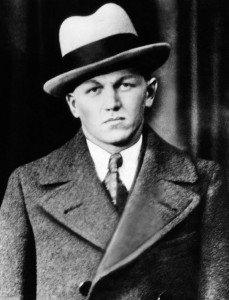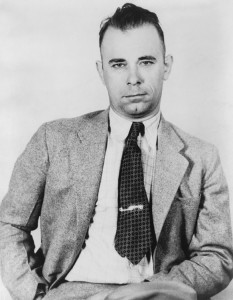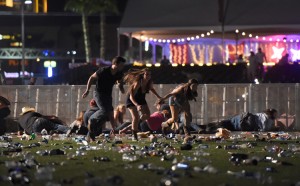Public Enemy Number 1
Wednesday, November 27th, 2019November 27, 2019
On Nov. 27, 1934, 85 years ago today, Federal Bureau of Investigation (FBI) agents gunned down the notorious gangster George “Baby Face” Nelson in Barrington, Illinois, a suburb of Chicago. Nelson had been the FBI’s “Public Enemy Number 1,” a label reserved for the most wanted violent criminal in the United States.

George “Baby Face” Nelson was just 25 years old when his life of crime came to a violent end 85 years ago today on Nov. 27, 1934. Credit: © Everett Historical/Shutterstock
George Nelson was the alias of Lester Gillis, who was born in Chicago on Dec. 8, 1908. Gillis had a rough childhood, leading a criminal gang of juveniles and spending time in reformatory schools. His tender age, slight build, and youthful looks earned him the nickname “Baby Face.” At age 14, he was arrested for car theft and confined in a boys’ home for two years. After his release, his criminal activity intensified. Now known as “George Nelson,” he began robbing banks. Nelson’s bad habits led to prison time in 1931, but he eventually escaped and ran away to the West Coast.

John Dillinger, the leader of a criminal gang that included “Baby Face” Nelson, was the FBI’s original “Public Enemy Number 1.” Federal agents killed him on July 22, 1934. Credit: © Everett Historical/Shutterstock
Nelson worked with bootleggers (alcohol smugglers) in California before returning to the Midwestern state of Indiana in 1933. There, he took up with the infamous criminal John Dillinger, who had the dishonor of being the FBI’s very first Public Enemy Number 1. Nelson worked with Dillinger’s gang, and he was believed to have killed a number of people, including several police officers and federal agents.
After Dillinger was killed in Chicago on July 22, 1934, the FBI eventually turned its “Number 1” sights on Nelson. On November 27, federal agents cornered Nelson and his partner in crime, John Paul Chase, as they were driving a stolen car in the Chicago suburb of Barrington. Refusing to surrender, the gangsters began a gun battle that killed two agents and left Nelson severely wounded. Nelson died of his wounds that night, and his body was left for the police to recover. Chase got away, but he was arrested a month later and spent the next 31 years in prison.
The 1920′s and 1930′s were years of rising violent crime in the United States. The prohibition of alcohol, enacted in 1920, had encouraged the creation of organized crime to transport and sell illegal liquor. The Great Depression, a global economic slump that started in 1929, saw many people out of work and desperate to make a living—often beyond the limits of the law. The FBI created its highly publicized “Public Enemy” and “Most Wanted” lists in hopes that ordinary citizens could help agents locate dangerous criminals. Aside from Dillinger and Nelson, only two other Depression-era outlaws were named Public Enemy Number 1 by the FBI: Charley “Pretty Boy” Floyd (killed in October 1934) and Alvin “Creepy” Karpis (arrested in May 1936).



